This classic view of Hallstatt is breathtaking, don’t you agree? An idyllic alpine town nestled between a serene lake and forested mountain peaks – populated by charming houses with flower-draped wooden balconies and a majestic tall church spire. I wondered to myself: Can a place this picture-postcard-perfect really exist? And wherever that is, I want to go there!
That burning desire finally came to pass one summer on a visit to Munich, Germany to visit good friends. While they were working during the week, I took off on my own (by train) to visit the two Austrian destinations – Hallstatt and Vienna – that had been smoldering at the top of my “must-see” travel list for quite a long while.
Introducing Hallstatt
Hallstatt is located deep in Austria’s beautiful Salzkammergut Lake District, a UNESCO World Heritage region. It’s a 2-hour train ride south of Salzburg and about 4 hours from both Munich and Vienna. Even though you can drive here, it’s a real treat and easy to arrive by train (usually connecting through Attnang Puchheim).
Hallstatt sits on a beautiful alpine lake, Lake Hallstatt. However, the one-room train station is located on the other side of the lake, in the woods. Exiting the train, you walk down an asphalt path to the Lake dock where you catch “Stefanie” – a small ferry boat – for the short ride to town. The ferry meets each train – but be warned, it doesn’t wait for dawdlers. And, I speak from personal experience!
Talk about enjoying fabulous views of Hallstatt as you glide across the water – well worth the 2.50 euro fee (less than $3). You conveniently arrive at the main dock right in the middle of the old town. This is exactly how I began my delightful 2-night ( 1.5 days) visit to Hallstatt as a solo traveler.
Hallstatt is a place where you can unwind and recharge your batteries as you stroll the charming streets with cute shops and many beautiful old homes. It’s a nice break from touring Europe’s more action-packed towns and cities, like nearby Salzburg and Vienna. Here, enjoying gorgeous views (including graceful lake swans) from a lake-side café or restaurant is part of its “visual therapy” for Hallstatt travelers. The area also offers 40 different hiking trails for visitors who want to commune with nature amidst a stunning setting.
Hallstatt, one of Europe’s oldest towns, is quite small and easy to navigate. It has only around 1,000 residents, not counting the many visitors who flock here in the summer, particularly in August. During my way-too-short visit, I explored the captivating old town, visited the Bone Chapel, took a fun tour of the Hallstatt Salt Mine, and ate some great food (including fresh local fish and apple strudel).
Hallstatt’s Long History As a Salt Mining Region
Hallstatt is very proud of its 7000-year history. This is due, in large part, to the prolific salt mines in the nearby mountains which gave rise to the town’s name, which means “place of salt.” In fact, an entire epoch – the Hallstatt Era (from 800 to 400 BC) – is named for this area. The Hallstatt Salt Mine is still a working mine. Its salty brine flows through a pipeline to the modern salt works at Ebensee, 25 miles away.
Artifacts have been found in this region from throughout ancient times – the Stone Age, Bronze Age, the Hallstatt Era, and Roman times. Around 1600 BC, Bronze Age Celtic people were attracted to the area by a brine (salty) spring which had sprung up. Salt – the precious “white gold” – was used for preserving meat. People later dug tunnels to mine the rock (which was 70% salt).
In the prehistoric times, the people lived up in the mountains by the salt mines. Over 1,500 Celtic graves have been excavated there. The Romans – who were victorious over the Celts in 13AD – were the first settlers to live down along the lake. In fact, you can walk on an ancient Roman road in the basement level of the local sports shop (more on that later).
My Salt Mine Tour – Salz Welten Hallstatt
Hallstatt offers a fun and interesting tour of its historic Salt Mine – which they claim to be the oldest one in the world. I was definitely game for this! To get to the mine, most visitors take the fast (and steep) funicular ride up to the top of the mountain, just above Hallstatt. There is also a steep trail leading up (about 40 minutes to walk) for those who feel a strong need for a grueling hill workout. I chose the funicular!
- Miner’s House (Knappenhaus)
At the top, you are now in the beautiful Hallstatt High Valley, which offers gorgeous views of the town and lake far below. From the funicular station, it’s about a 10-minute walk along a trail to a historic miner’s house (Knappenhaus), which is where you check in for your tour (with a specific time on your ticket). This house also has a gift shop and a museum detailing the hard lives led by 19th century miners.
Once called, your tour group heads into a room to don special and oh-so attractive old miner’s clothes – to protect your own clothes and help keep you warm inside the mine (registering around 50°F / 10°C ). After checking our bags, we walked up the hill in our new burgundy “miner glam” to the entrance of the mine. There we met our guide, an adorable young woman, who gave our 90-minute tour commentary in both English and German.
Slipping & Sliding Miner Style & the Salt Man
We entered the salt mine and walked down a long tunnel dug in 1719. We slid down the first of two wooden bannisters – original miner’s slides – to take us to the next lower level. The slides are always a crowd favorite. We saw a multi-media show about the mine’s history and followed our guide through several caverns, before watching a laser light show on an underground salt lake.
Way back in 1734, while doing tunneling operations at 110 meters underground, there was a hugely important archeological find. The fully-preserved body of an ancient man dressed in skins (along with his hair and actual skin) was discovered, literally “pickled” in the salt. This body, dubbed “Salt Man,” is believed to be a miner killed in an accident around the year 600 BC.
It was finally time for the highly anticipated Mega Slide, Europe’s longest wooden slide at 64 meters long. It’s a friendly race competition as your individual speed is tracked as you barrel down the slide – be sure to smile for the camera at the end! We finished up by taking a fast-moving miner’s train (hold on tight!) back out to daylight. Yes, some folks might say the Salt Mine Tour is touristy but, like most people, I thought it was enjoyable and informative – for adults and kids alike.
- Mega Slide / Photo Credit: Salzwelten
- Miner’s Train / Photo Credit: Salzwelten
UPDATE: Since the time I took the salt mine tour, a new attraction has been added that I want to share. In 2015, they opened the Bronze Age Cinema, located 400 meters underground. An animated feature in the Cinema showcases a story of the ancient staircase (estimated at more than 2,500 years old) that was discovered in 2002 in the prehistoric part of the Hallstatt Salt Mine. Below you can see the statue replica of one short section of the staircase displayed in town in front of the Hallstatt Museum.
- Exit of the Mine Tour – miner’s train returning
- Staircase Statue – Hallstatt Museum
Hallstatt’s High Valley – Stunning Views & Ancient Graves
In addition to the salt mine tour, there are other cool things to see and do in the Hallstatt High Valley. Near the funicular’s top station, you will certainly want to take the 14-meter high elevator up to a lookout bridge spanning the entire high valley. From here there are amazing views over Hallstatt’s old town, the lake and the mountainous Salzkammergut – Dachstein region. The bridge leads over to Rudolfsturm – today a restaurant with a sun terrace and more great vistas.
Originally, the Rudolfsturm (Rudolph’s Tower) was built in the 13th century as a watchtower to protect the salt mine. Then it served as a very nice residence for the different mine foremen until the mid-20th century. Inside, an exhibition in his former living quarters is dedicated to Johann Georg Ramsauer, who discovered the high valley’s burial ground.
- Rudolfsturm – upper left
- Elevator to the Outlook Bridge
This area is home to more than 1,500 excavated prehistoric Bronze Age tombs. Following a walking path from the funicular station on the way up to (or down from) the miner’s house for the Salt Mine Tour, you can wander along these world famous burial grounds and visit a Celtic grave (demonstration tomb).
Hallstatt Skywalk – The Town’s Newest Must-See Attraction
Darn, I went to Hallstatt several years too early! The Hallstatt Skywalk opened in 2013, quickly becoming the #1 visitor favorite. The new viewing platform extends 12 meters (39 feet) from the mountainside, just under the Rudolfsturm restaurant. The Skywalk “floats” 360 meters (1,181 feet) over Hallstatt for a true bird’s eye look at what the Hallstatt marketing folks call “World Heritage Views.”
Entrance to the Skywalk platform is free. Of course, most visitors need to pay for the roundtrip funicular ride up and down the mountain. The Hallstatt Skywalk looks really impressive from the photos on the website – albeit a bit terrifying for someone like me with a fear of heights. But I’d be willing to give it a try if I’m ever lucky enough to return to Hallstatt.
Once you’re done touring the upper Hallstatt Valley and have ridden the funicular back down to the town and lake level, take note of one more interesting salt-related item. As mentioned, Hallstatt is still a working salt mine. Nearby train tracks lead to the Erbstollen tunnel entrance, where a many-miles-long salt tunnel bores into the mountain, ultimately connecting (by a shaft) to the tunnel just explored during the Salt Mine tour.
Exploring Hallstatt’s Old Town
I spent the rest of my time exploring Hallstatt’s historic village, meandering along its charming streets and lanes, admiring its beautiful houses and enjoying more lake views. It’s very small so you only need a few hours at the most, depending on how much eating and shopping time you add on! As my guide, I used my always-trusted Rick Steves guidebook and some maps and literature I picked up from the local Tourist Information office.
I popped into the Dachstein Sport Shop, where they had uncovered a Celtic and ancient Roman settlement while digging during a renovation project. Of course, I had to go downstairs for the thrill of walking on ancient Roman flagstones. My hotel, Gasthof Simony, was conveniently located on the lake and near the pretty main square, called Market Square (Marktplatz). I really enjoyed the beautiful lake views from my room’s second floor balcony – more visual therapy.
- Lake view from the balcony of my room at the Gasthof Simony
The Bone Chapel & Its Painted Skulls
Another highlight was a visit to the 12th century St. Michael’s Chapel, located next to the Catholic parish church perched high above the lake. There I found a pretty, well-tended graveyard and the Bone Chapel. This charnel house (Beinhaus) houses a most unusual collection of over 600 artistically painted skulls and other skeletal bones.
The majority of the skulls have been lovingly decorated and named, dated, and sorted by family. Many of the skulls were decorated at the end of the 18th century, but a few date from the 20th century. Of course, the big question is why painted skulls? Turns out, it’s essentially an “over-crowding” issue.
When an existing grave was reused for a new burial, the skull or bones were transferred from the grave to the charnel house (ossuary) as part of a second funeral. The identity of the deceased family member was preserved by decorative paintings and inscriptions. This practice was stopped in the 1960s, about the same time the Catholic Church began permitting cremation.
Hallstatt Food & Entertainment
One evening, I had dinner at my hotel, where I ordered the tasty local prized fish, Reinanke (whitefish), freshly caught from the Lake (and complete with head!). Also popular in Hallstatt is the lake trout (saibling). I finished off my meal with the most delicious, cinnamonny apple strudel. In fact, I returned the next night for a repeat performance of just the strudel. I do love dessert!
I also enjoyed a great lunch – after working up an appetite from the Salt Mine Tour – at the cozy Brau-Gasthof Restaurant with new friends from the tour. My delicious meal included a cheese dumpling soup (in broth) and a spinach, goat cheese, and pesto strudel. Rick Steves mentions that Restaurant Bräugasthof (with a choice of inside or outside dining on a lakeside patio) is a great place to try Lake Hallstatt’s fish.
My last evening in town, I happily stumbled across an Austrian dance performance on a stage in Hallstatt’s main plaza. The performers, adults and children dressed in typical costume, entertained the crowd with characteristic dances of their alpine region. Not surprisingly, between dances, many of the performers could be seen enjoying a good beer! And yes, “the hills were (definitely) alive with the sound of music!” I love Austria – and Hallstatt!
I hope you will have the opportunity to visit Hallstatt one day soon. Plan to spend at least one night there so you really have time to see the sights, meander the village at a leisurely pace, and enjoy the good food. Of course, you will want to allow time for just sitting on a lake-side bench or at a café (or your hotel balcony) soaking in the picture-postcard-perfect Hallstatt views! Yep, visual therapy at its finest.
Hallstatt Website Resources:
- Overall Information about Hallstatt – click here
- Hallstatt Salt Mine Tour – click here
- Hallstatt Skywalk – click here
- Gasthof Simony B&B (TripAdvisor reviews) – click here
- (my Gasthof Simony guesthouse has a great location but it’s an older B&B that’s a bit worn around the edges. Current TripAdvisor reviews are mixed – from glowing to non-impressed, so read them carefully to see if this B&B is a good match for you).
Another wonderful close by Austrian destination is Salzburg (which I visited in 2021). To learn more, check out my blog post: Visiting Austria’s Lovely Salzburg – A Town Guaranteed to Charm.
Comments: Have you been to Hallstatt? Were you as impressed as I was? If you haven’t yet been, is Hallstatt on your list now? What you would most like to see or do there?

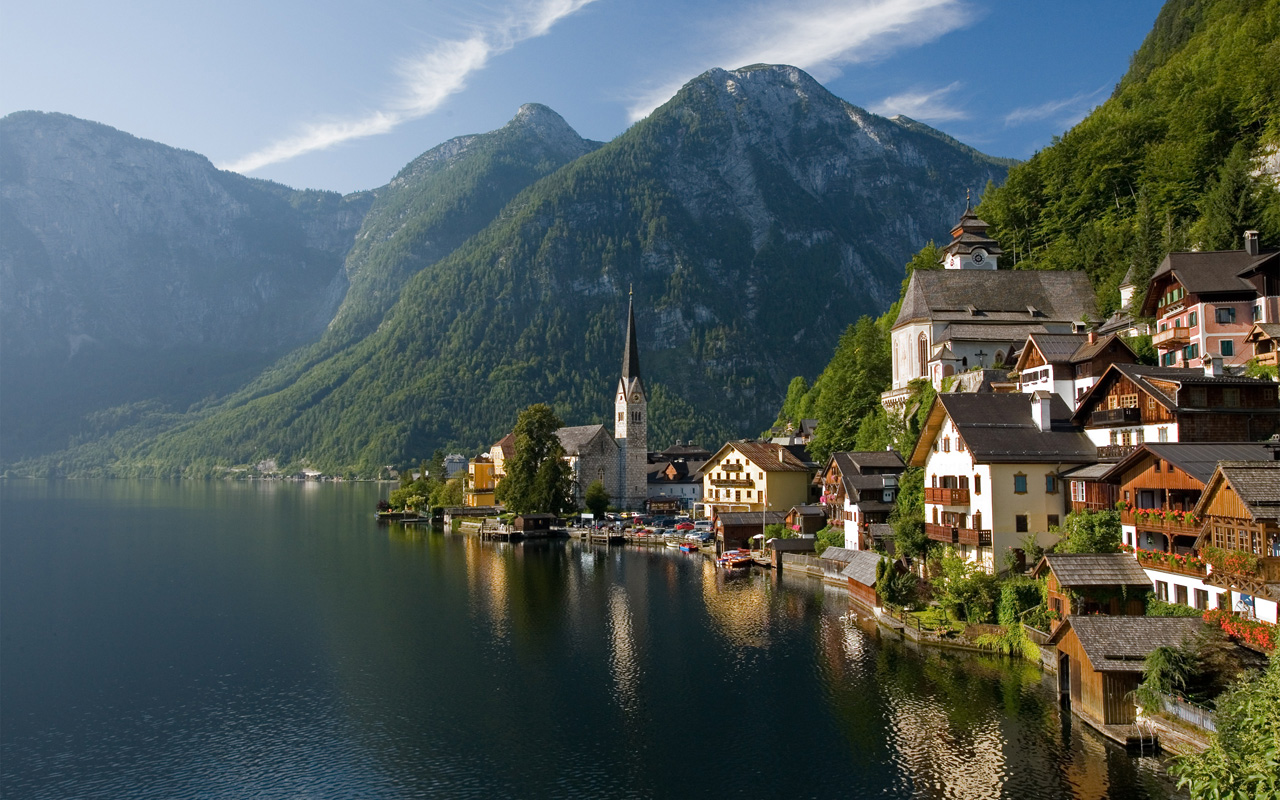
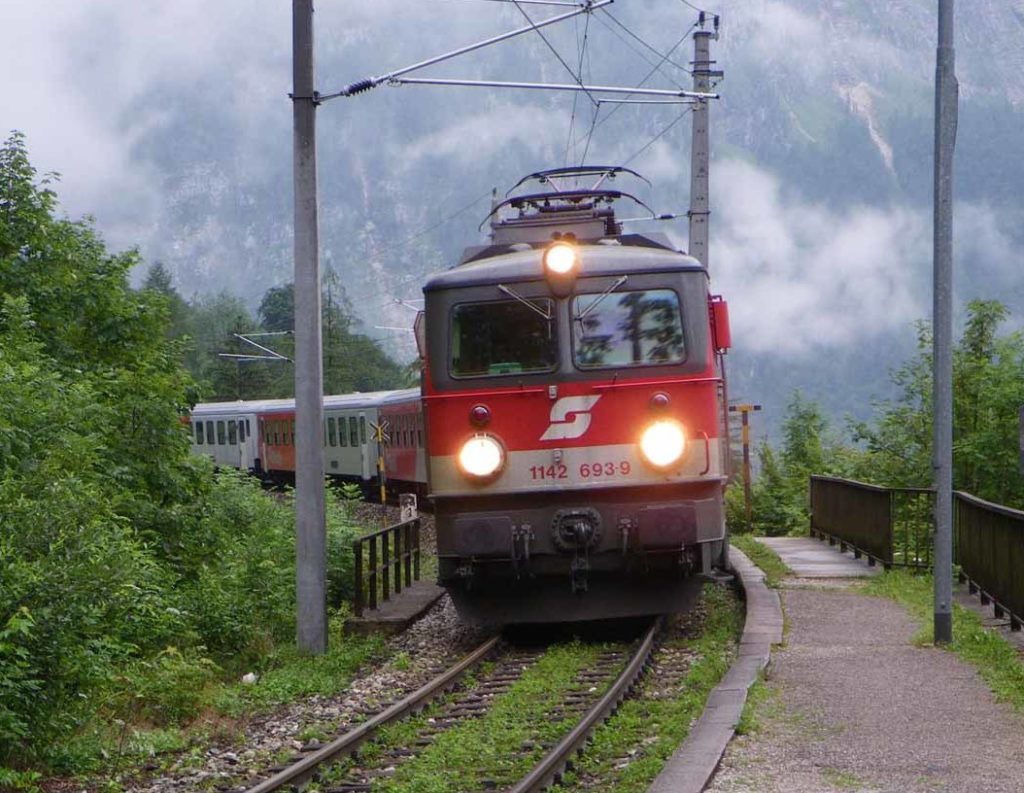
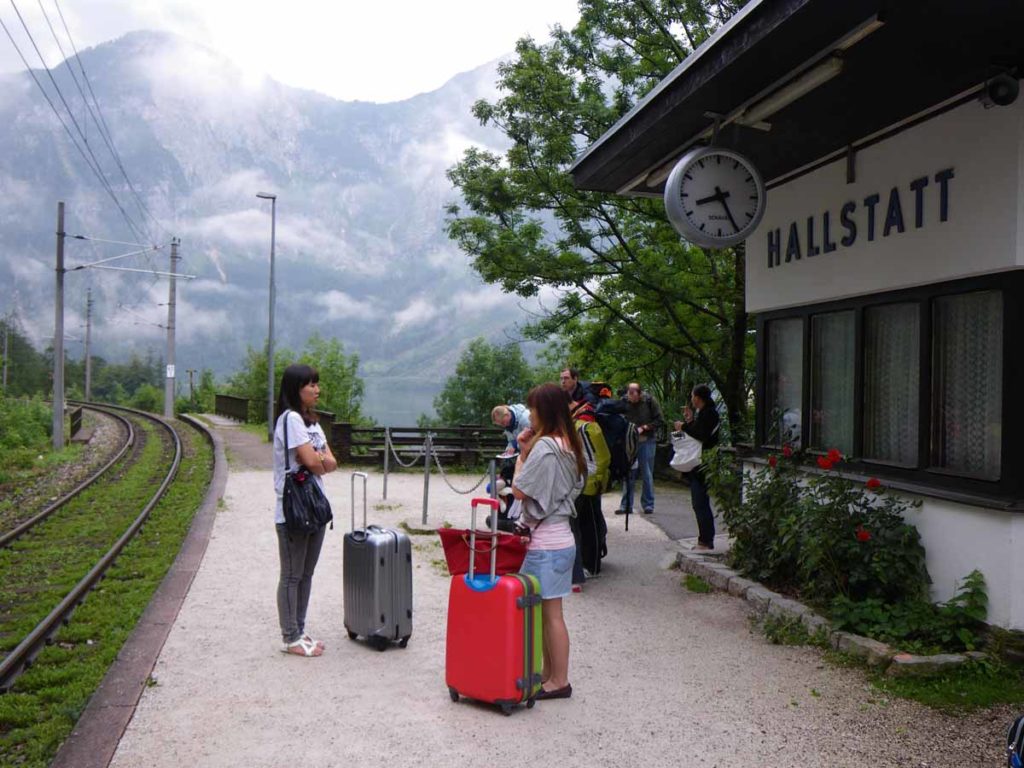
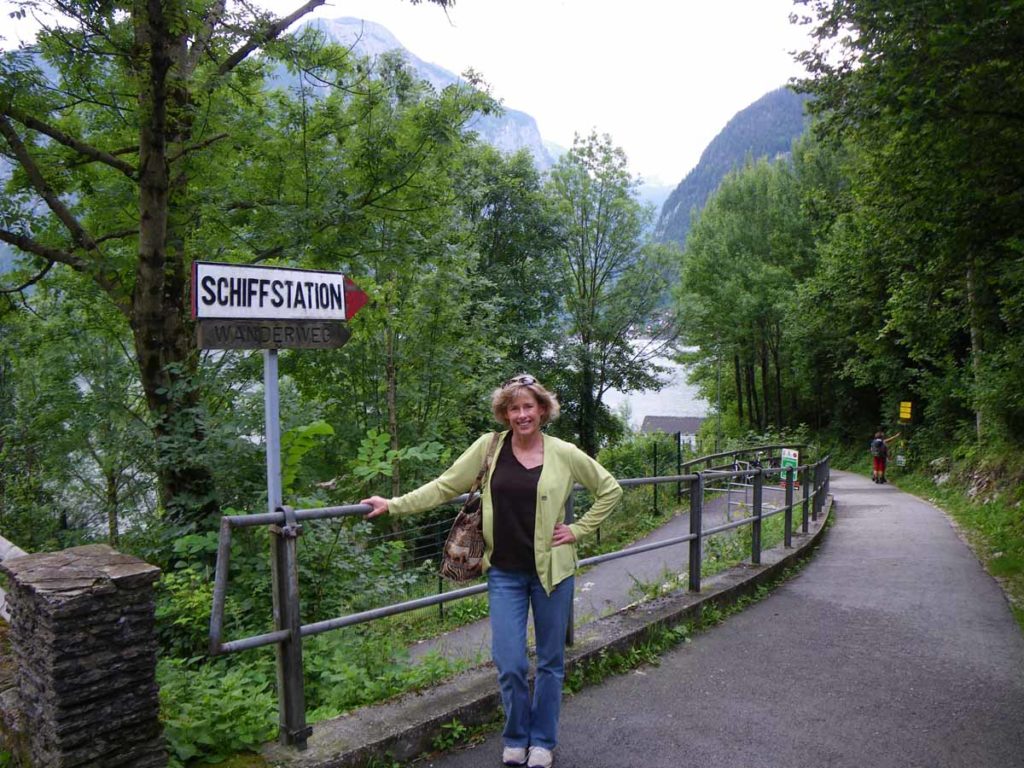
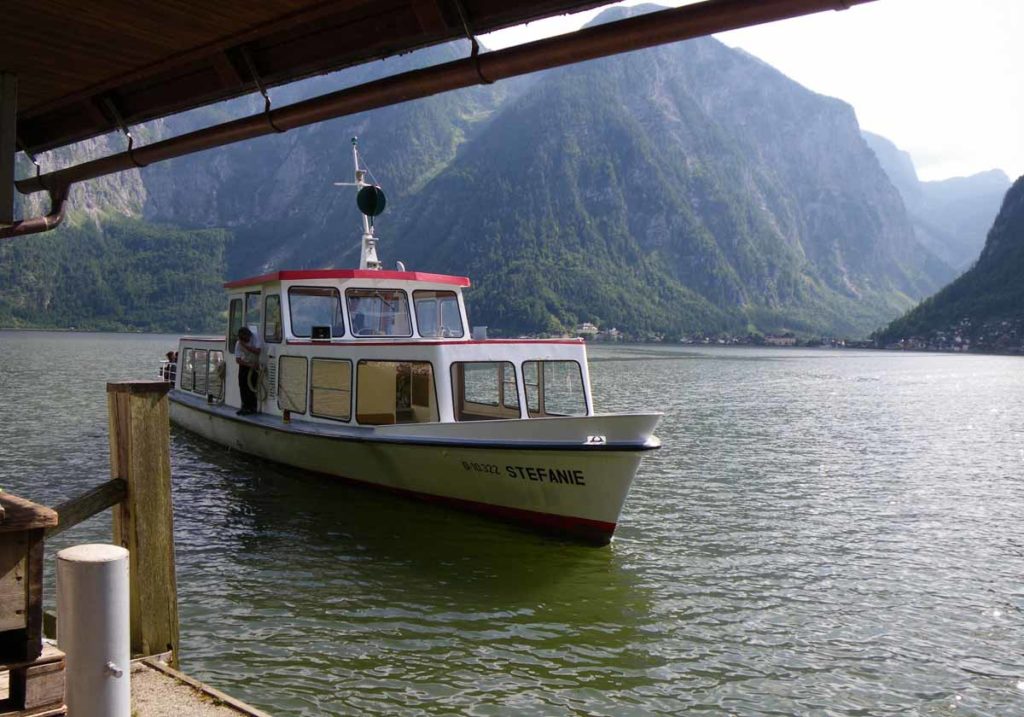
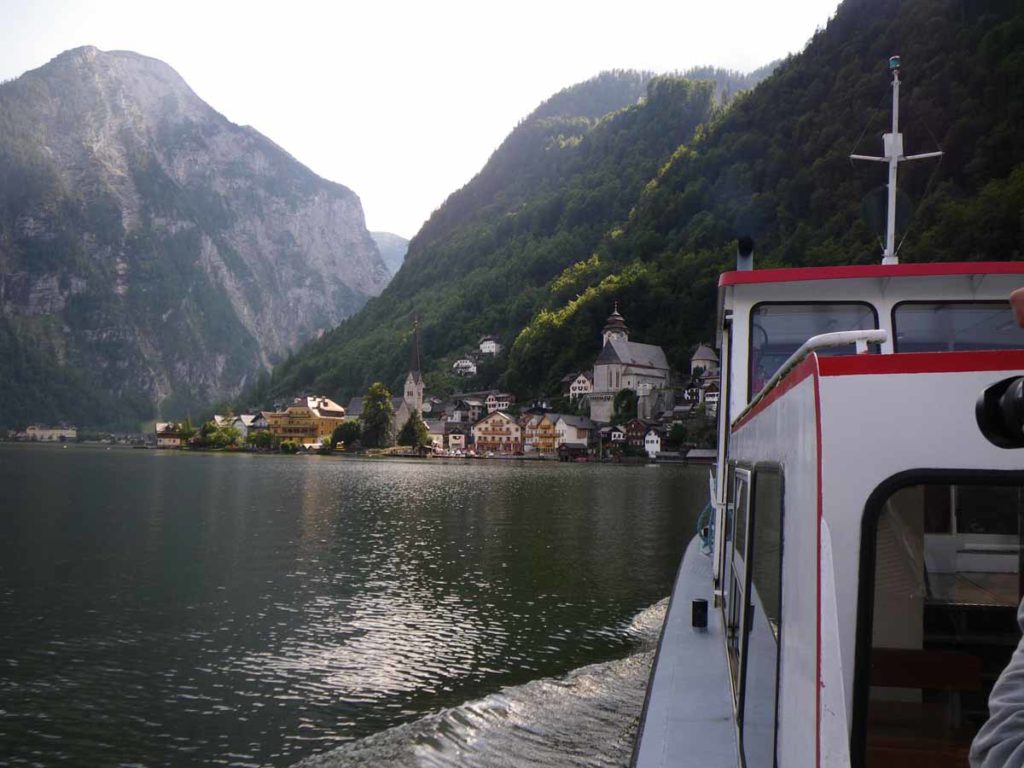
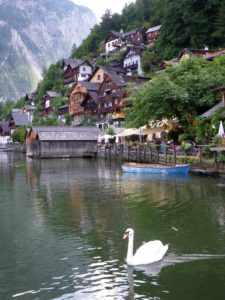
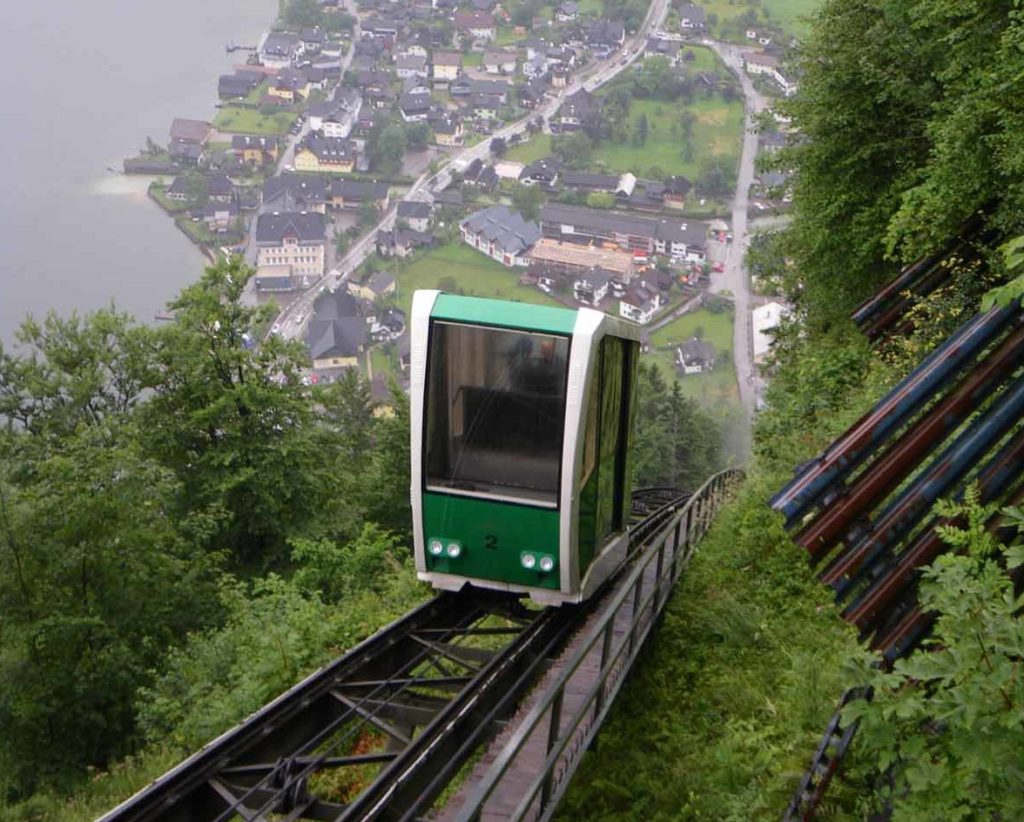
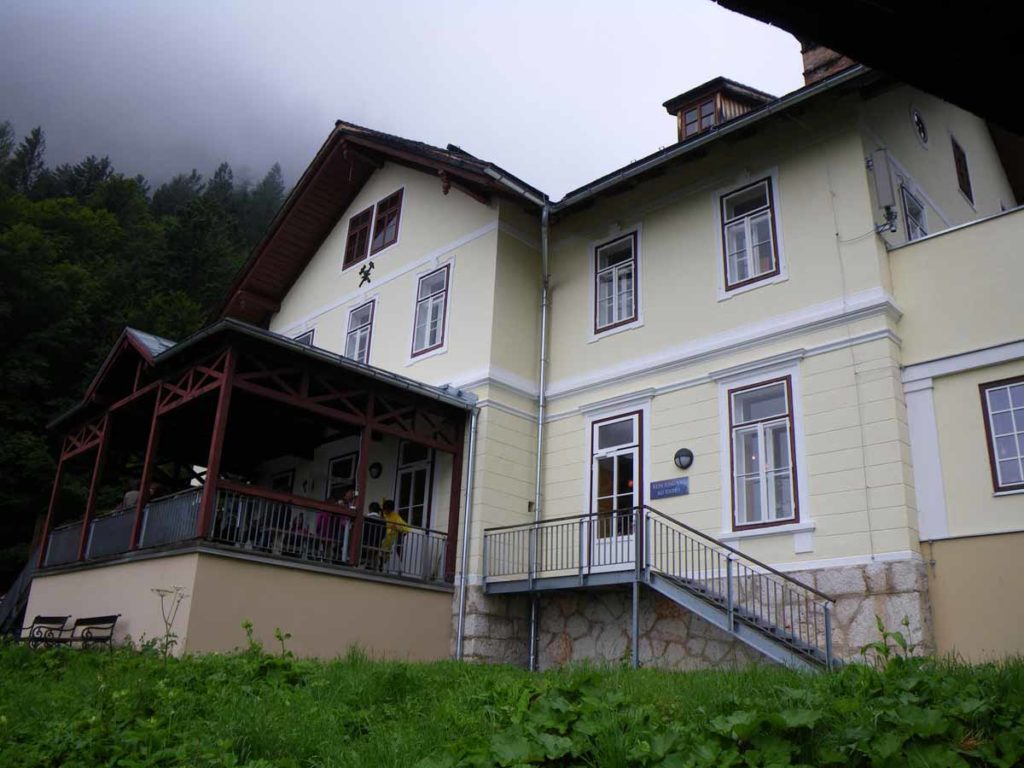
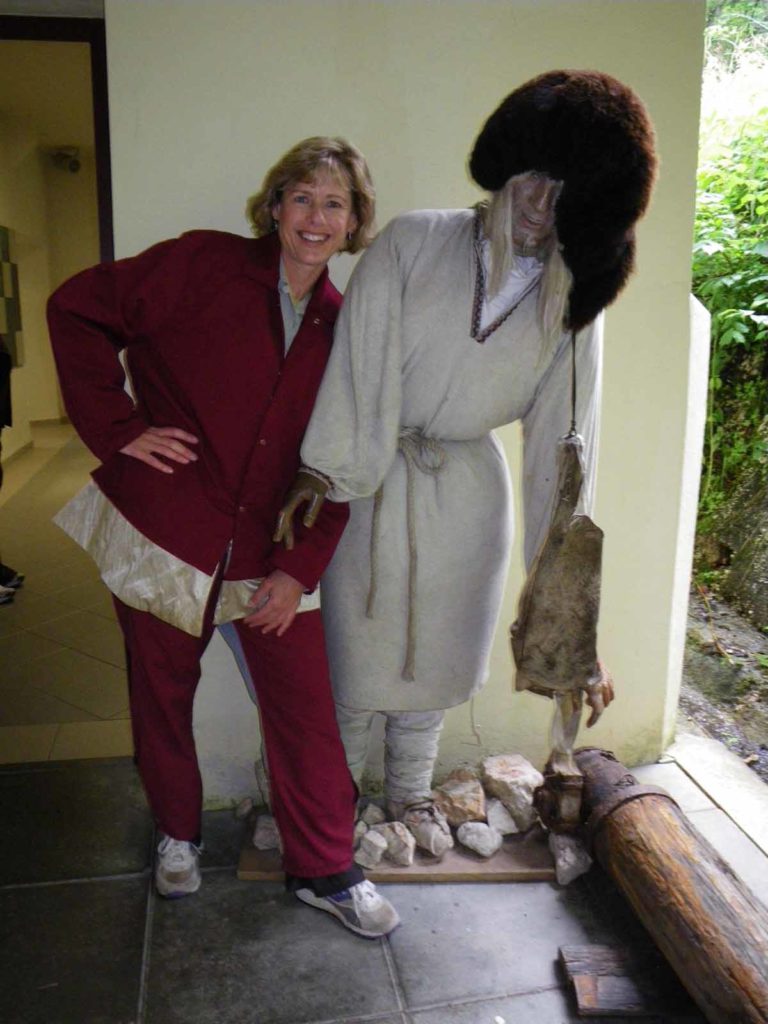
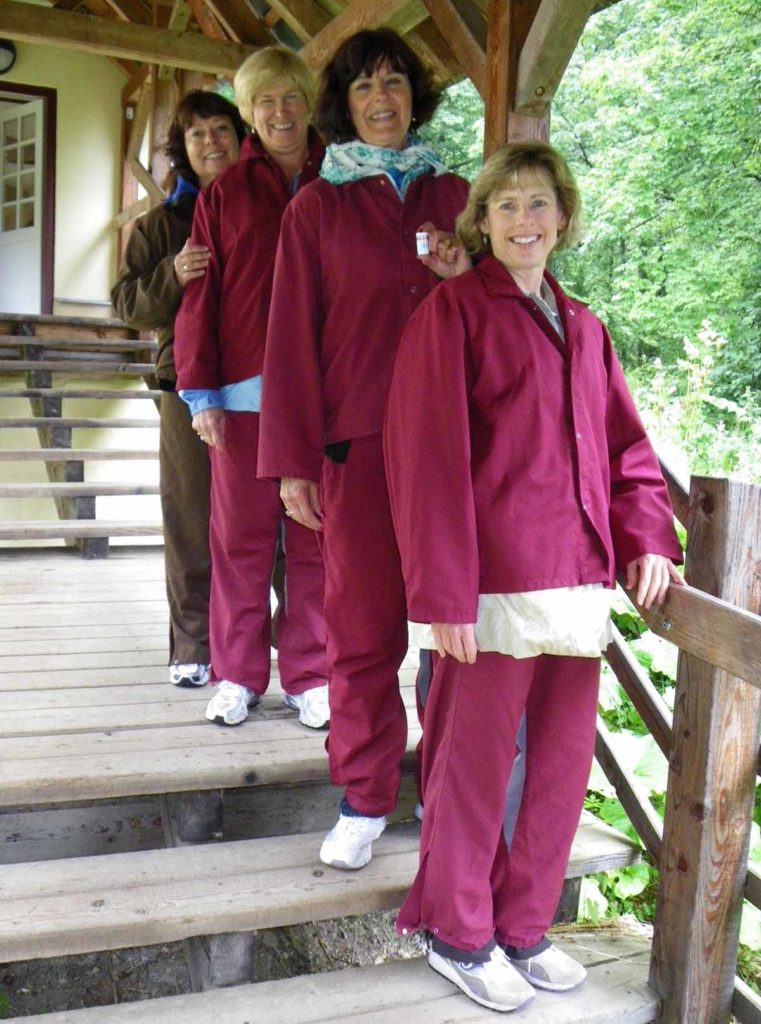
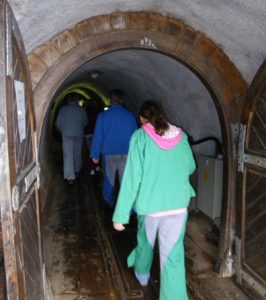
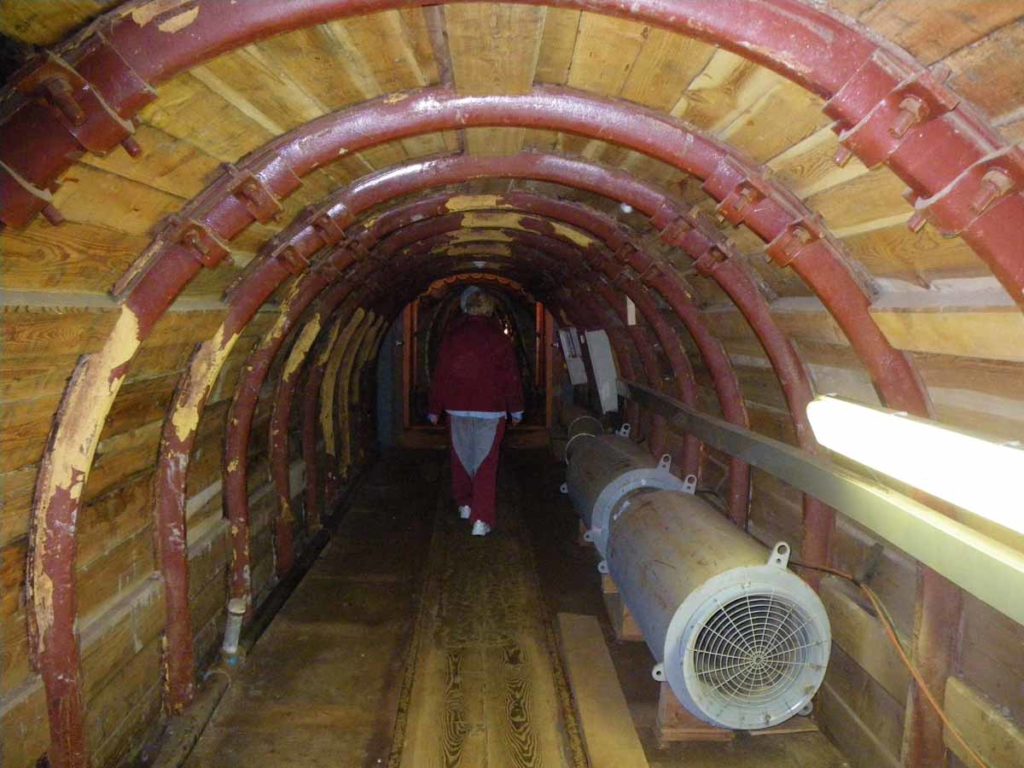
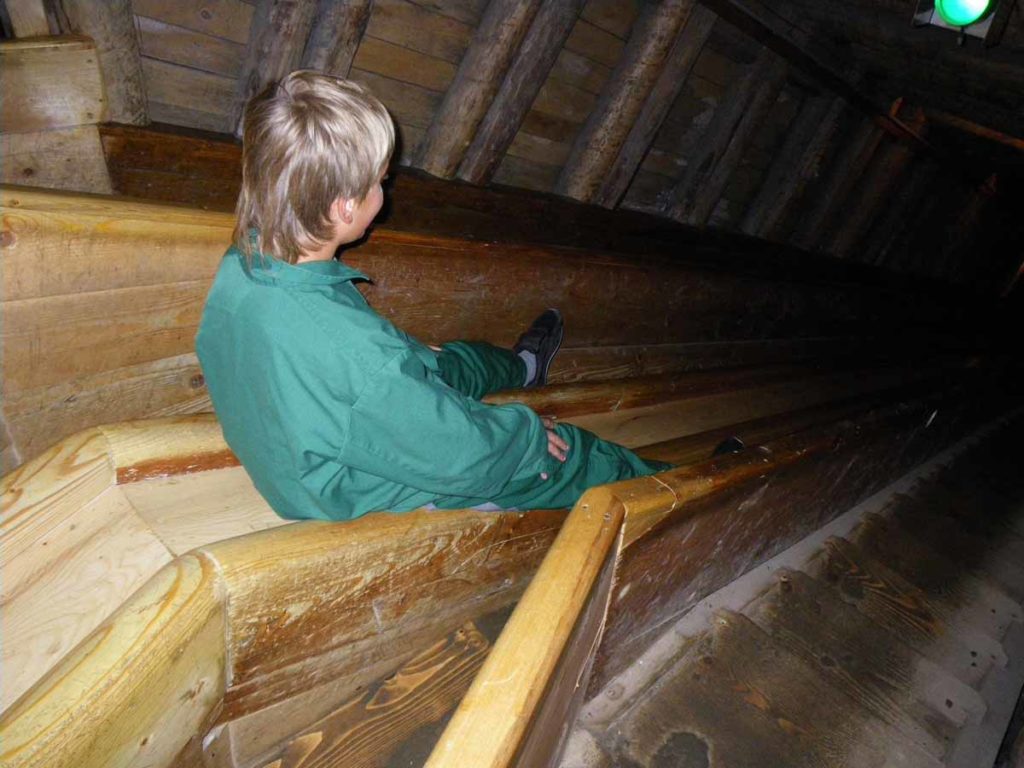
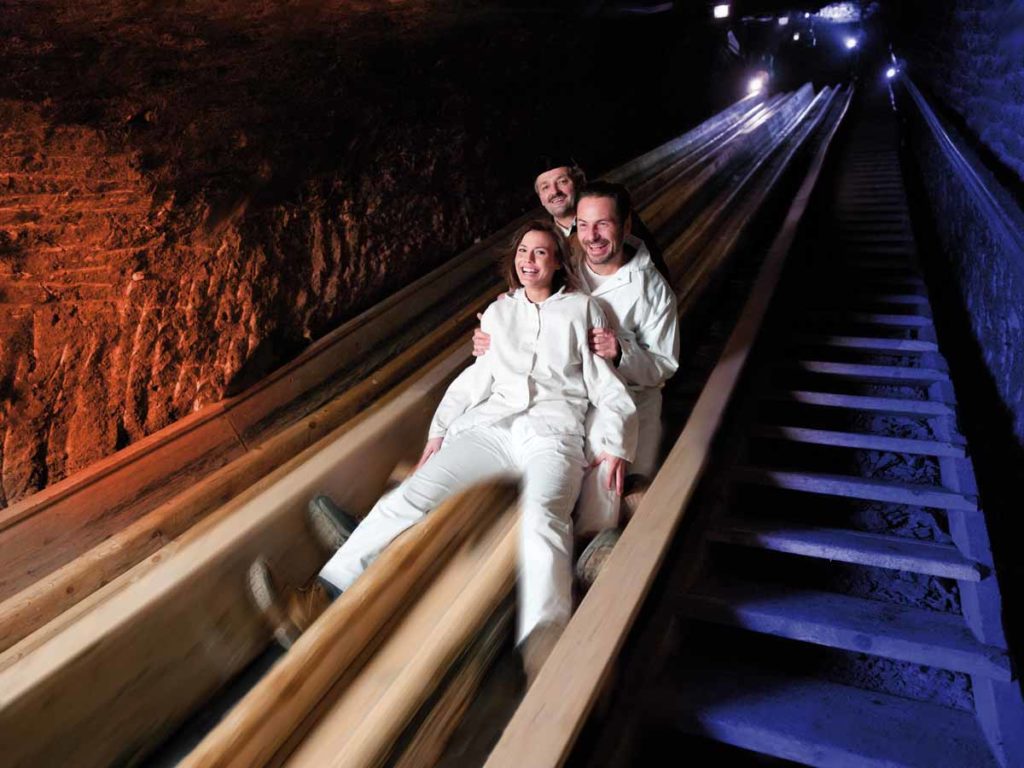
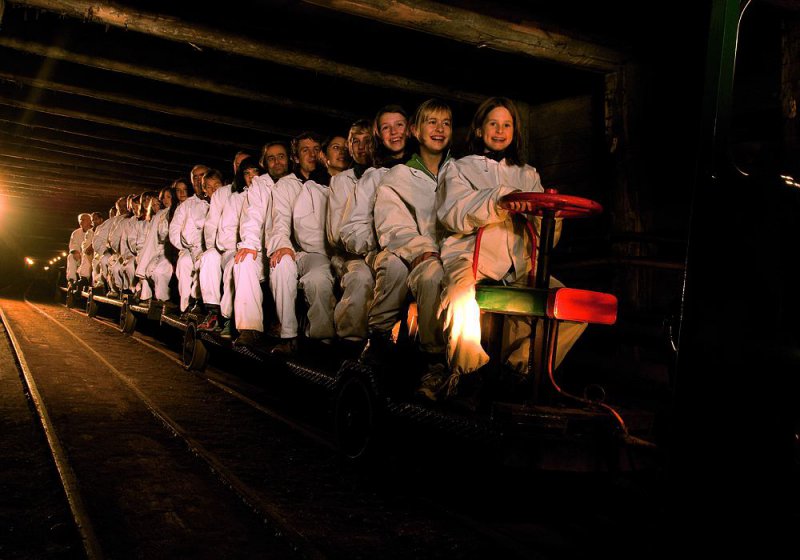
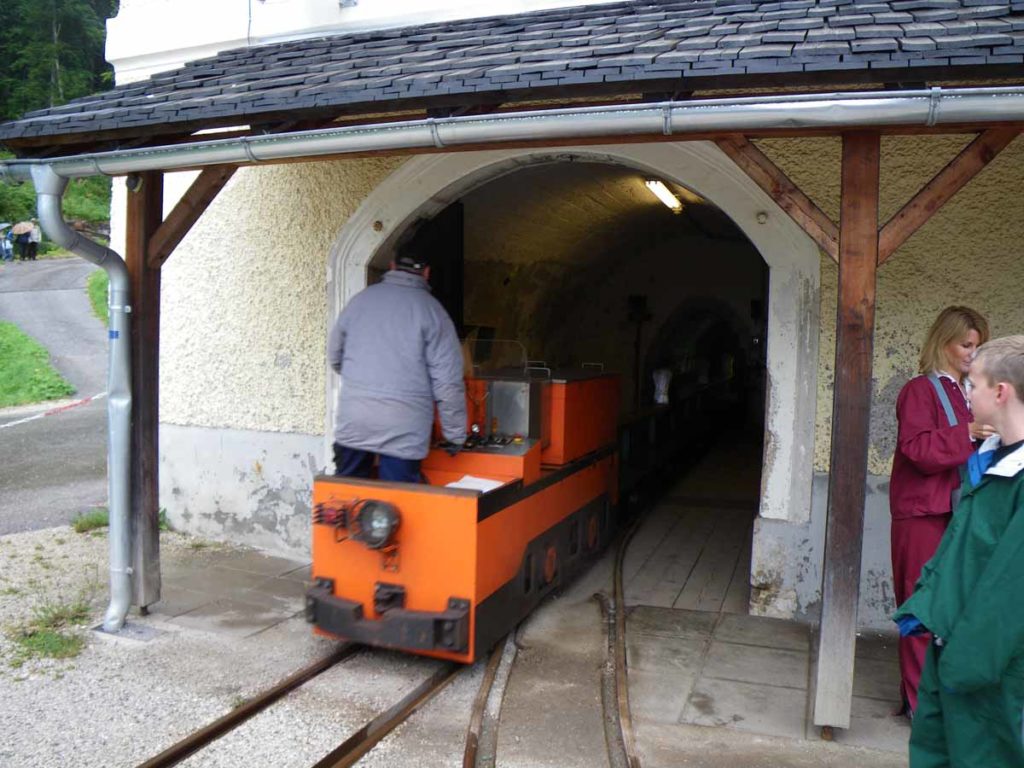
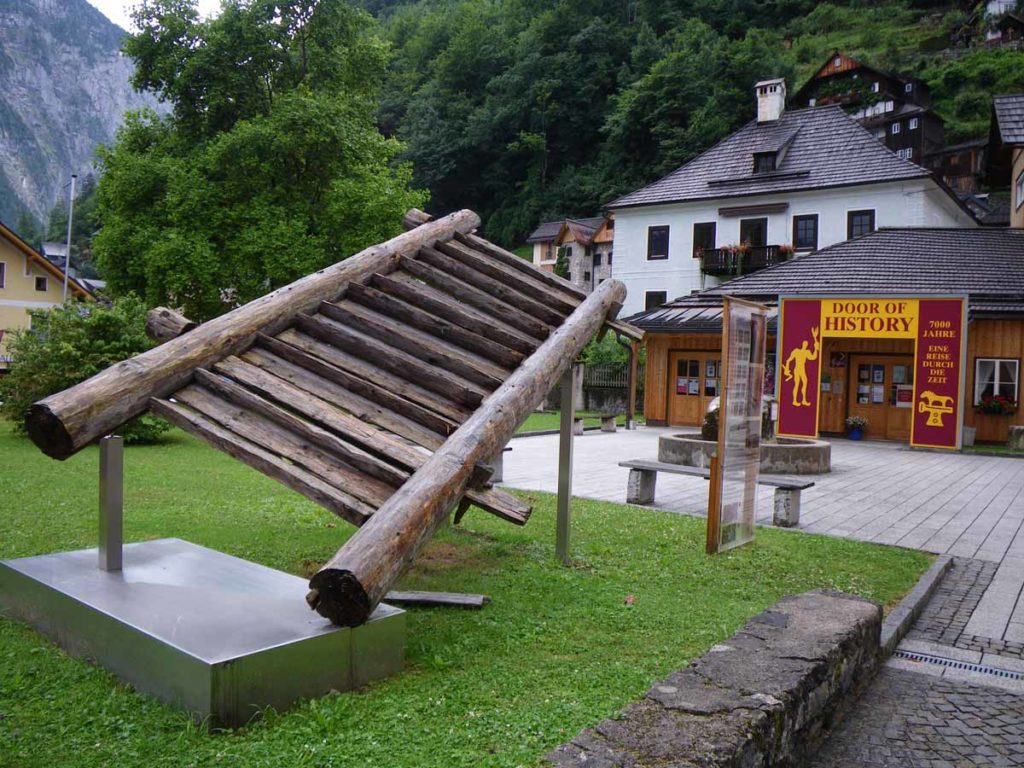
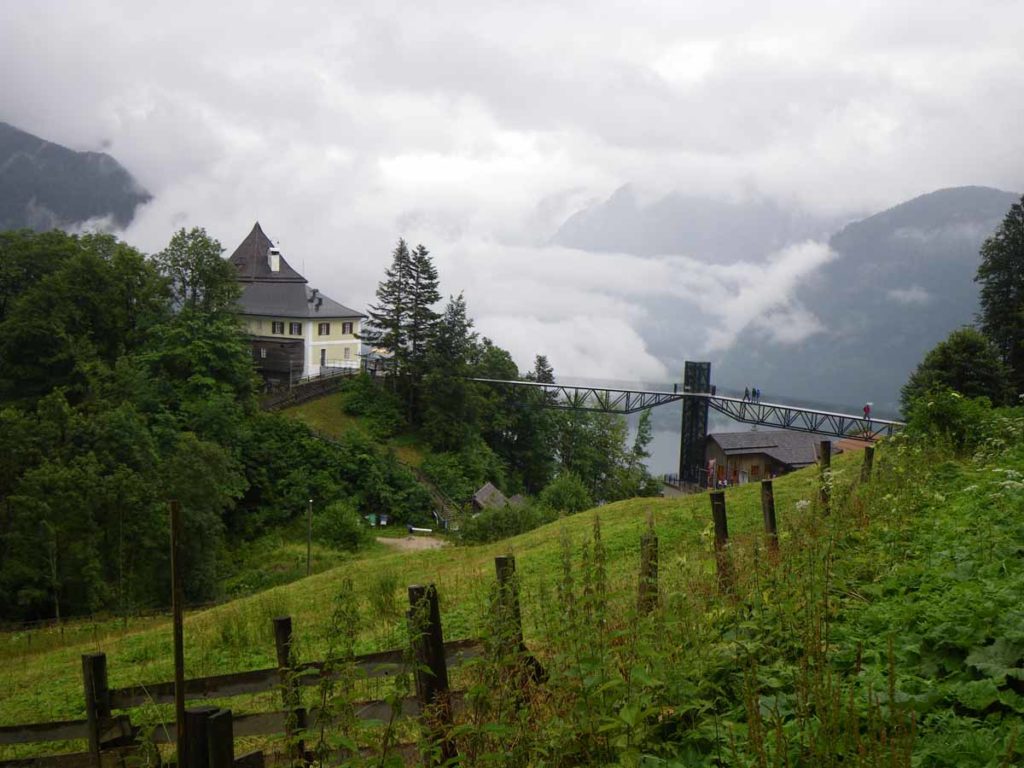
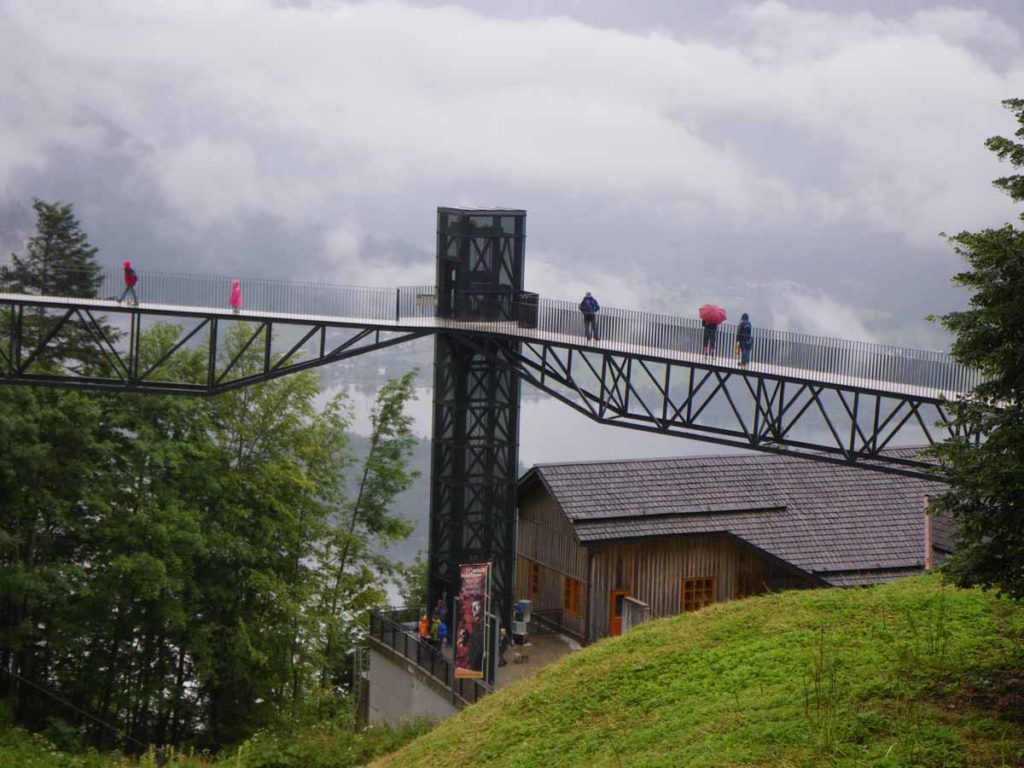
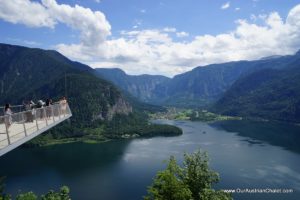
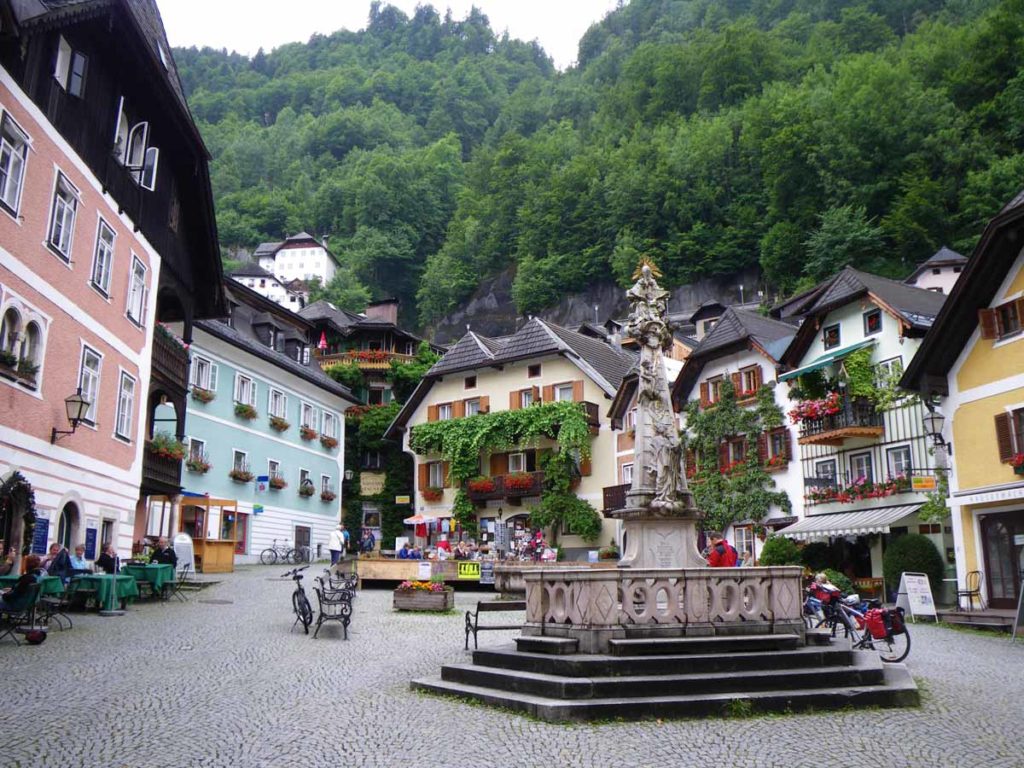
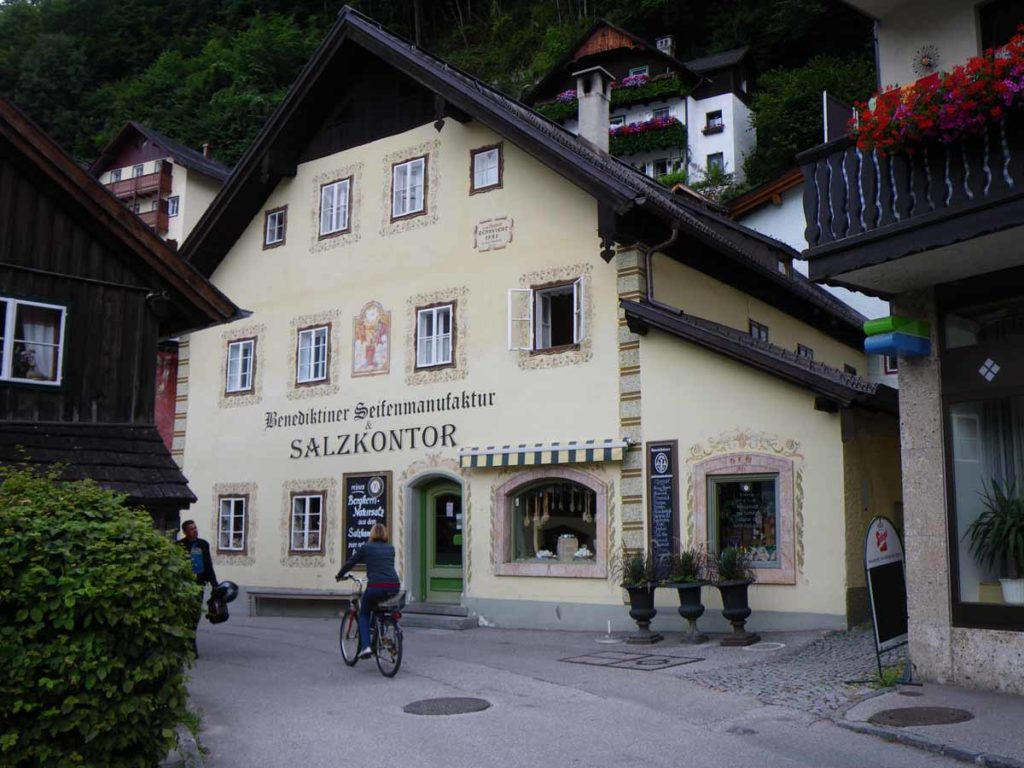
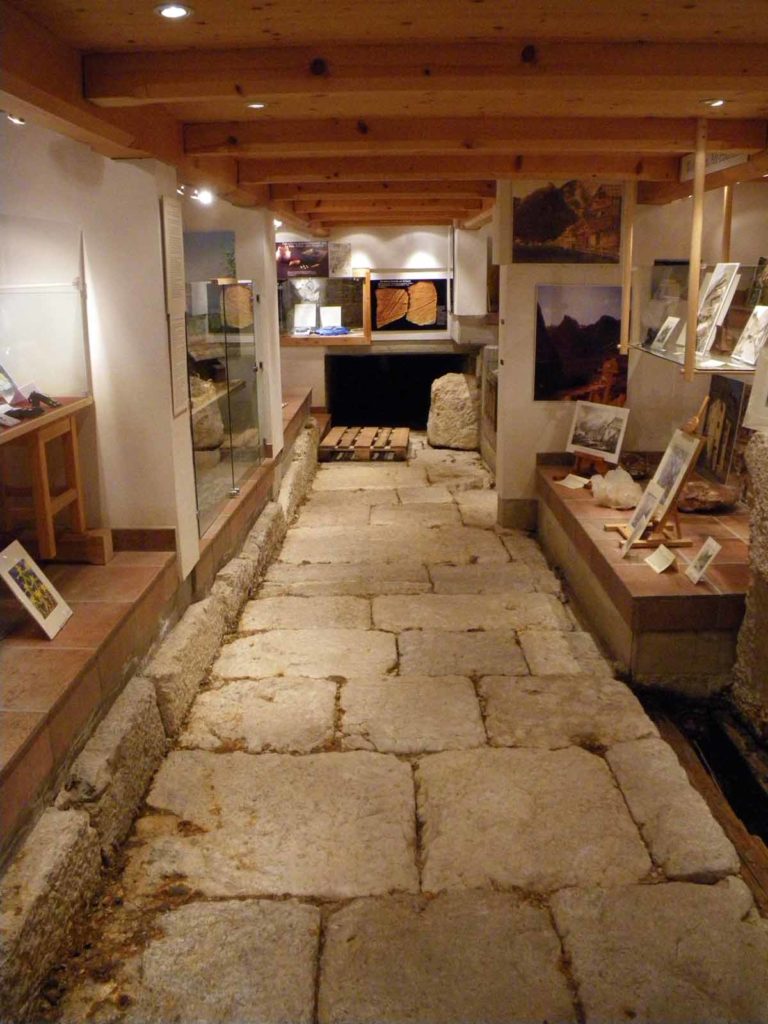
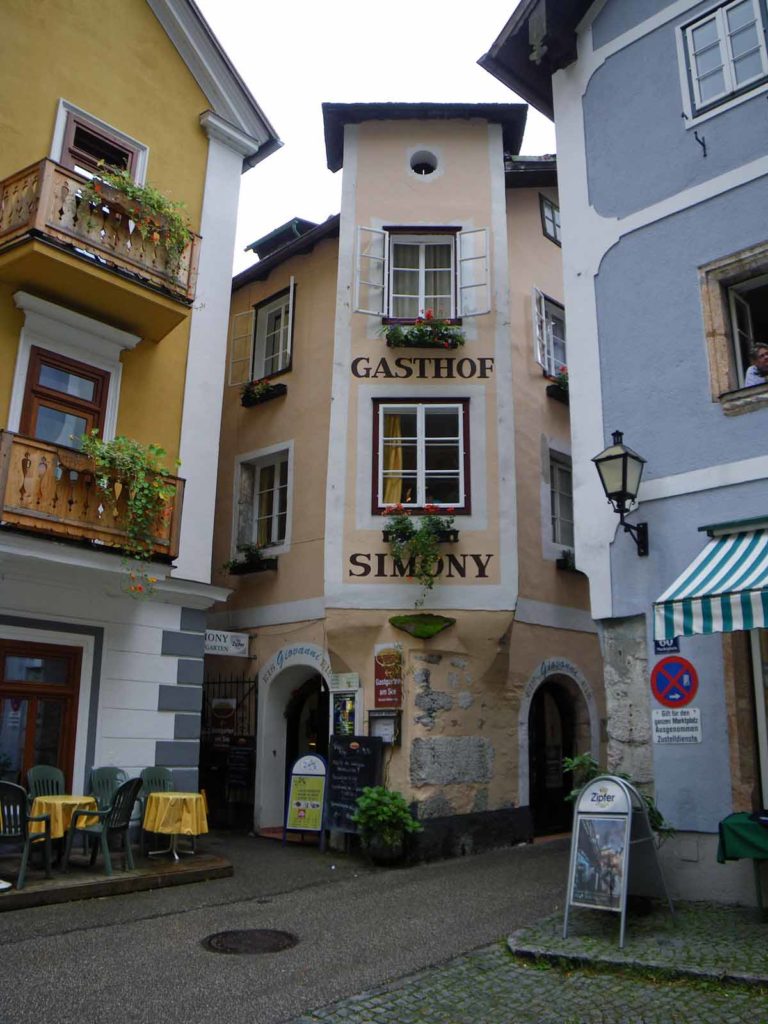
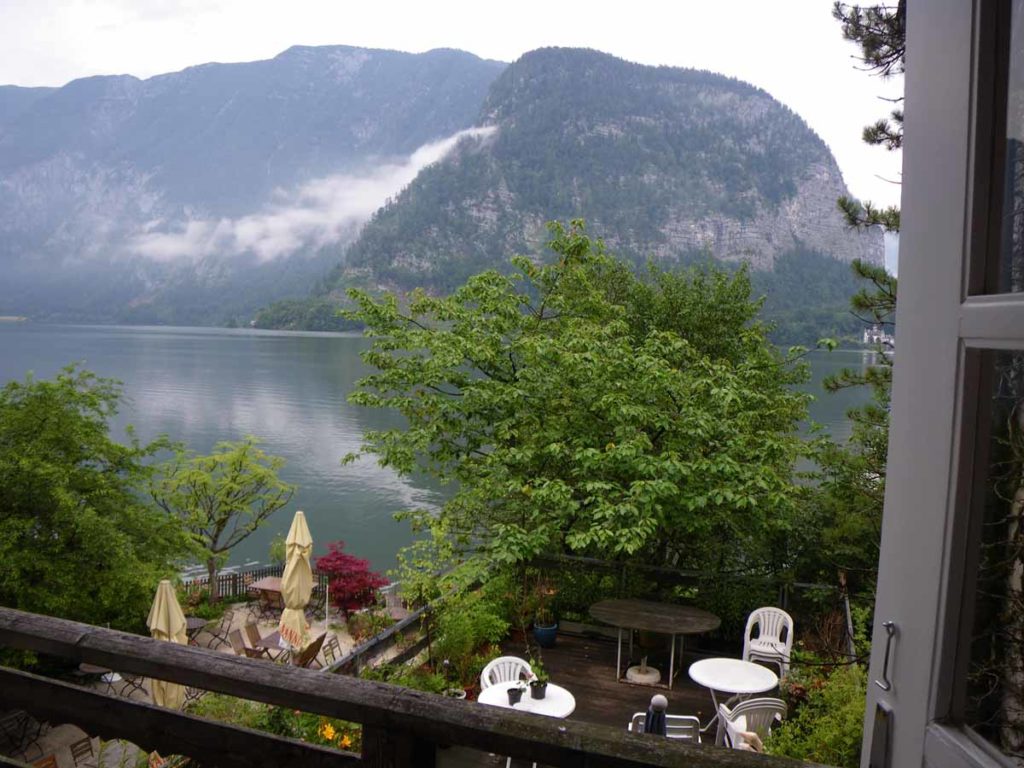
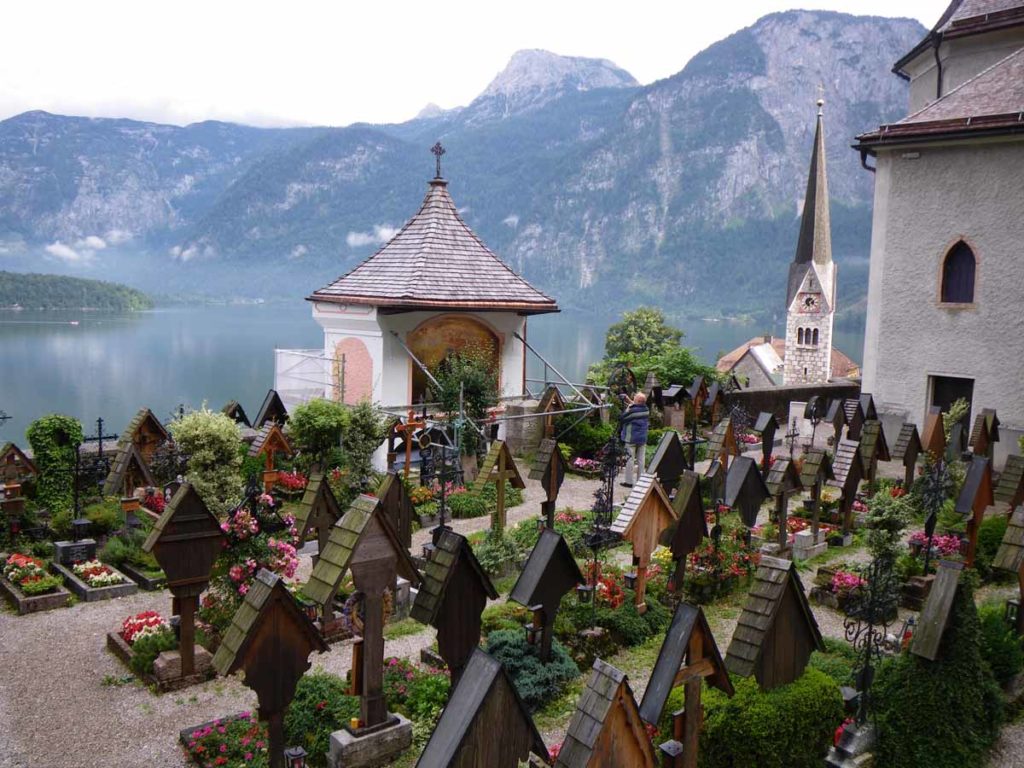
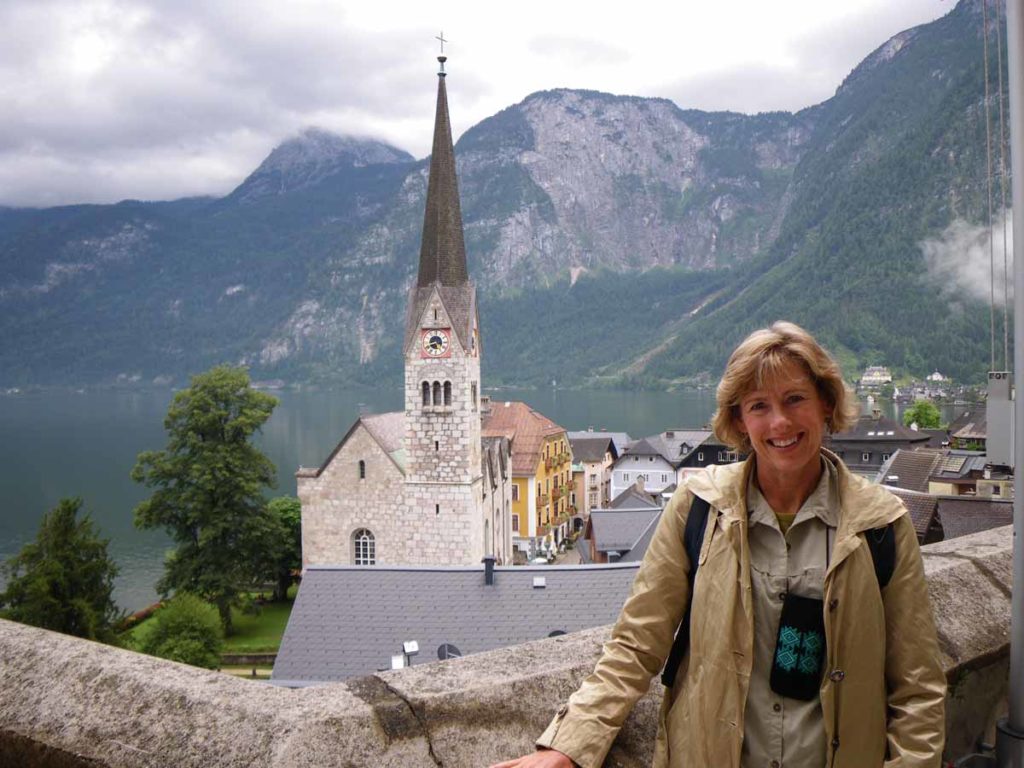
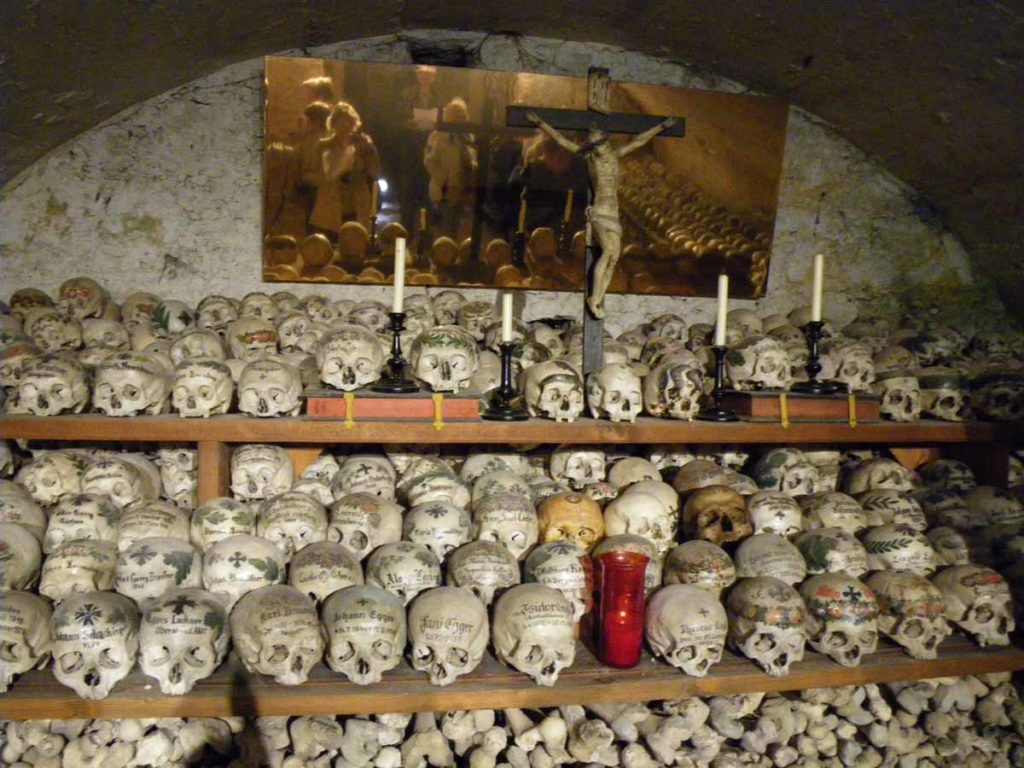
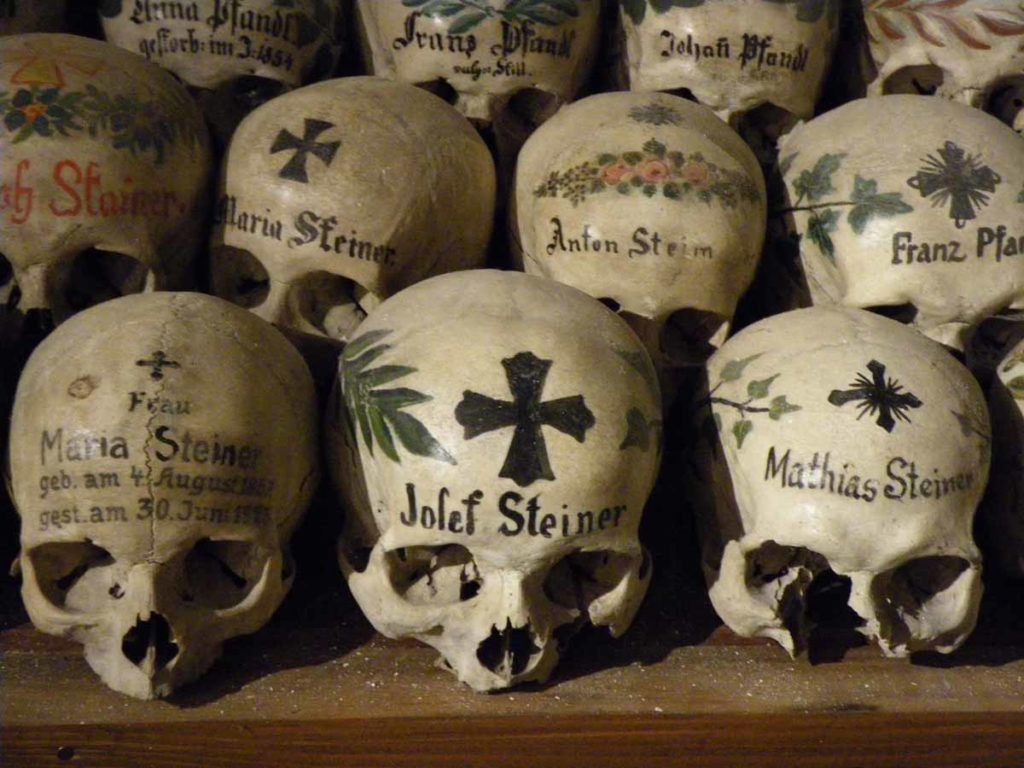
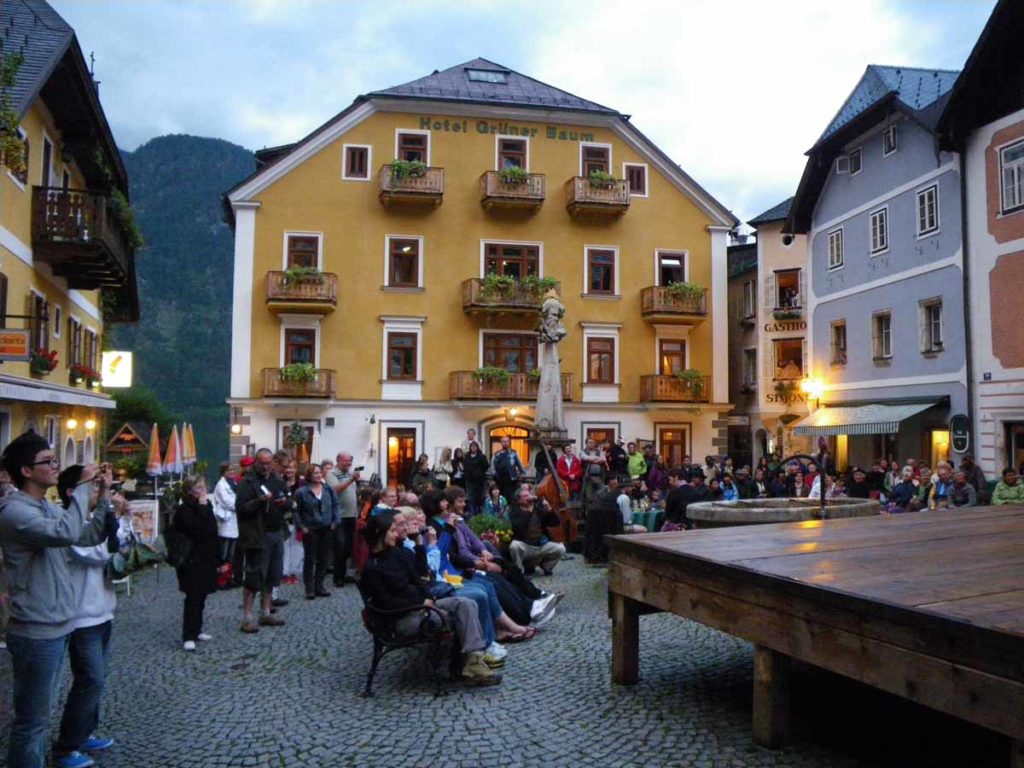
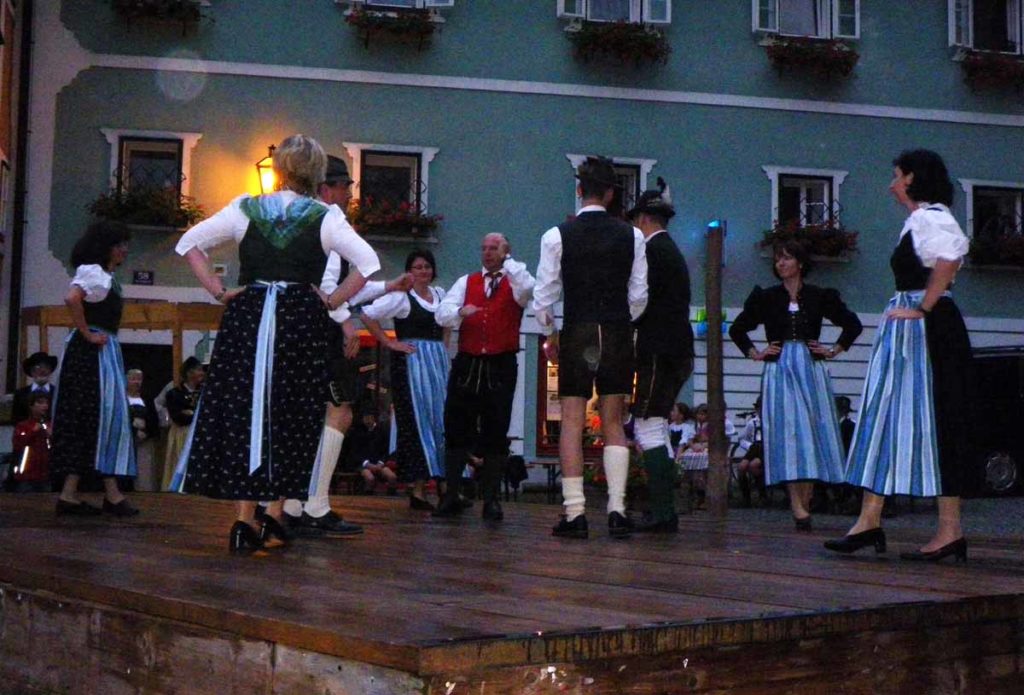
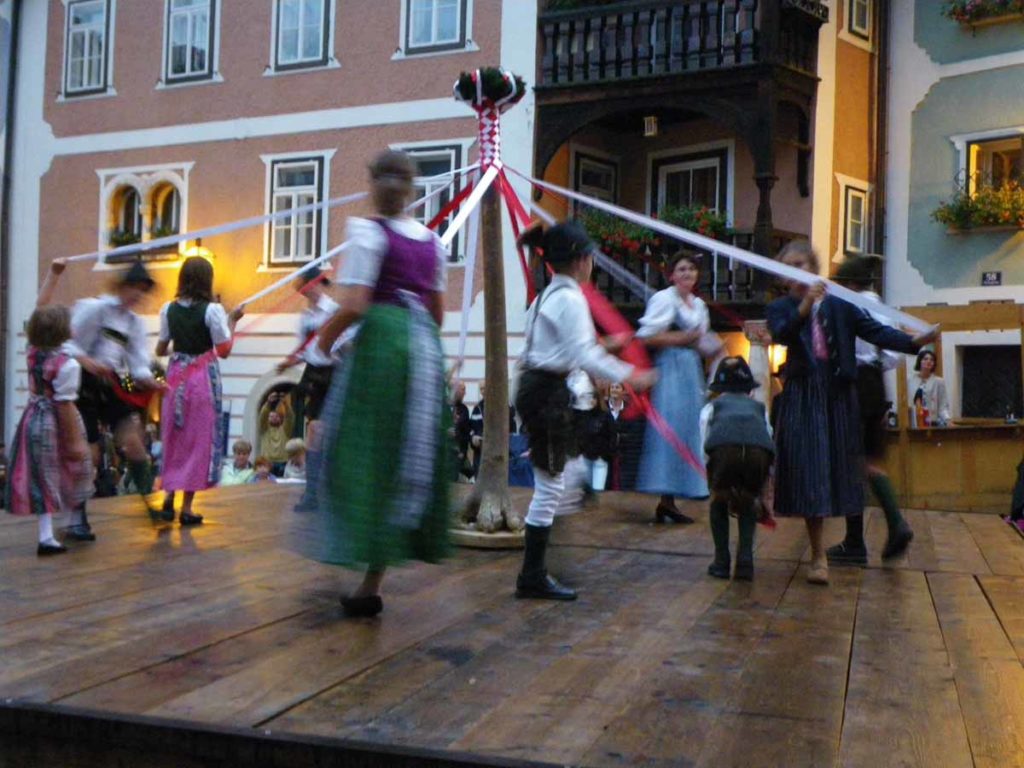
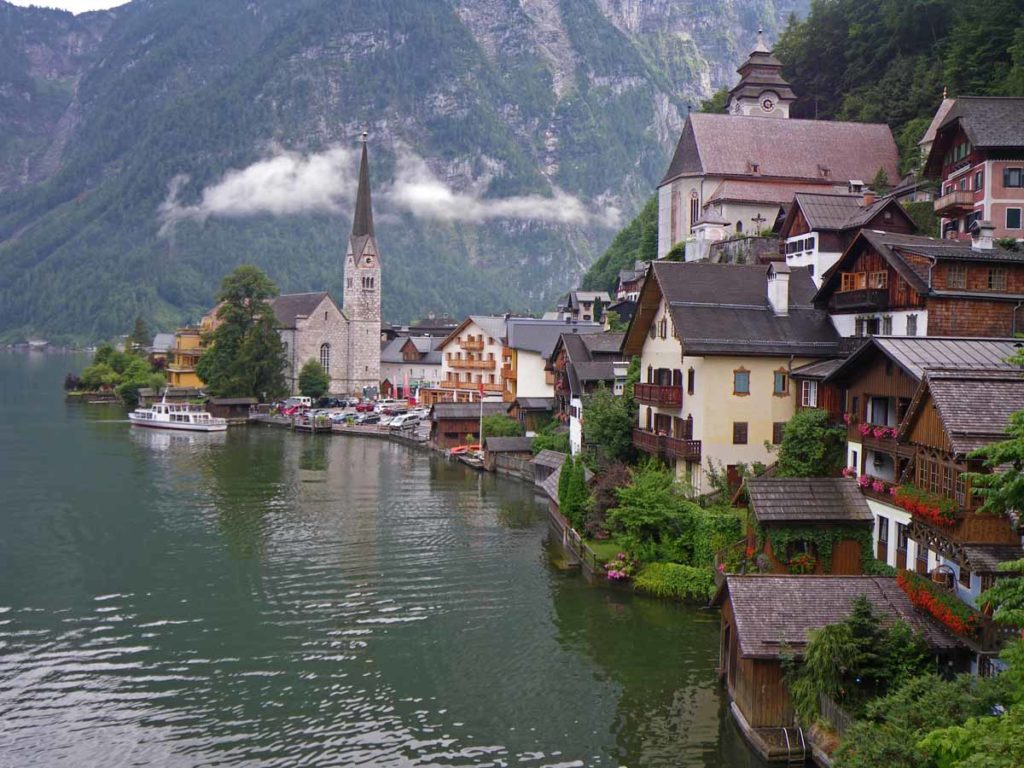
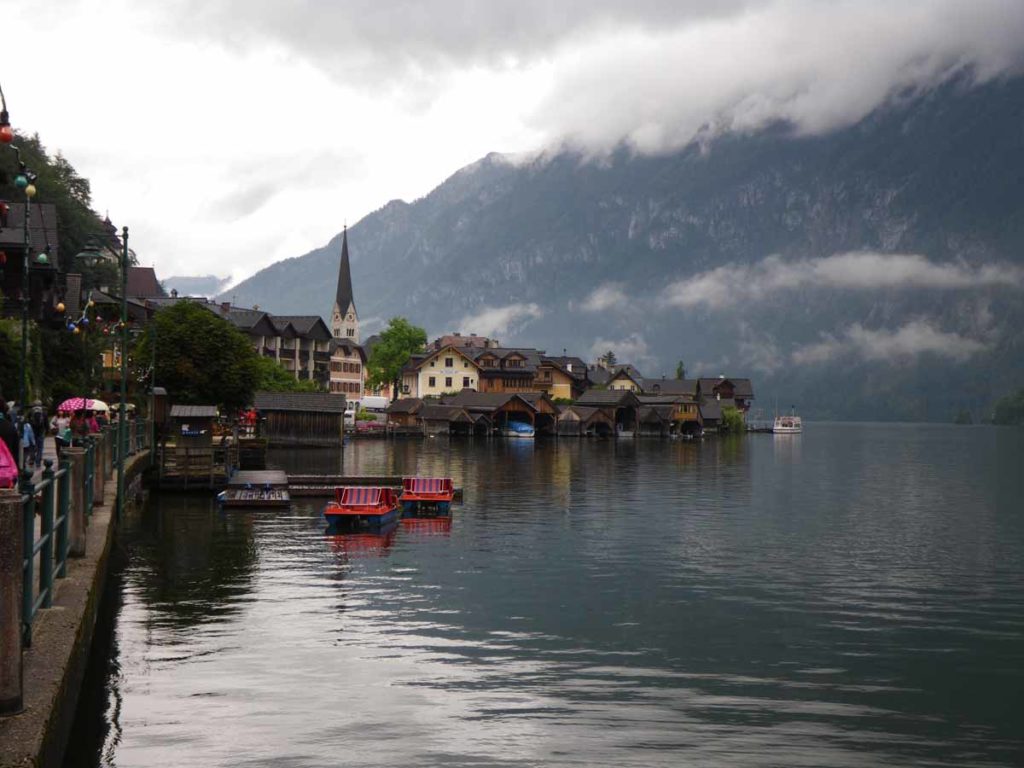

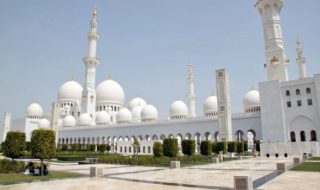
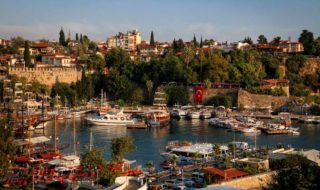
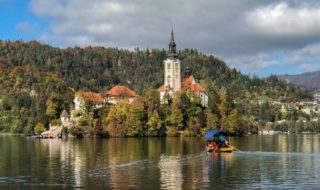
Beautiful site Janet. Hallstatt brings back so many fun memories. You are doing a wonderful job. Thank you very much
Thank you, Bob, for your very kind words! Glad you’ve also visited Hallstatt – it’s quite a place for travel photographers like us.
I enjoyed this latest blog. Nice job Janet. I’ve been to Munich before for business and loved it. You can have your choice of food from anywhere in the world. One night Italian? One night Greek. Everyone bringsvtheir dogs who get a chair and their own “royal treatment”. Also loved Graz in Austria. Another destination for work. Used the train to get there. My own personal highlight was touring the BMW plant. I’m a BMW Girl all the way. Magnificent. Take care my friend. Happy Holidays to all.
Thanks Lorraine. Your Germany and Austria travels sound wonderful. They’re a great part of Europe! Happy Holidays back to you!
You made me want to pack up and go!
Thanks, Linda. That’s the intention of a travel blogger – to share places they love and hopefully inspire others to go there too! Glad it worked. And, unlike the Camino pilgrimage you & I just shared, this trip was without a 20# backpack.
Hi Janet – Really enjoyed your descriptions! We caught Rick Steve’s segment about Hallstatt on PBS just a couple weeks ago and it went on the “must see” Bucket List. Your excellent blog makes us want to hop a plane tomorrow!
Thank you Lisa & Mark! Glad you enjoyed the Hallstatt post. Yes, I think I may have first learned about Hallstatt through Rick Steves too and it had been on my list for quite a while before I finally got there. And, I can promise it was worth the wait – you will love it! Hope you can hop a plane there soon. I told some friends about Hallstatt last summer and they included it on their trip to Munich – and loved it!
I loved your blog on Hallstatt! I really loved visiting Austria and Switzerland (see, I actually did travel ‘once upon a time’). I must say your blog made me want to go back. If it just wasn’t for the getting there and back again.
Anyhoo, I’m glad you were able to use the info I sent. Even those of us sitting in armchairs can help out! Thanks again for the beautiful pictures and fun stories. I came away longing for some apple strudel!
Thank you, Anita & you’re most welcome! Glad the Hallstatt story brought back wonderful memories for you! And, yes, that apple strudel is definitely worth traveling to Austria for.
As always, your coverage of that little village was extraordinary. I went in 2015 but had no knowledge of that walk out bridge. We took the train from Vienna, and only spent one night there, but worth the trip, for sure!
Thanks, Rita for your kind words about the Hallstatt post. Sorry you also missed the SkyWalk, walk out bridge, which opened in 2013. Guess we’ll both need to return one day! I could definitely make a repeat visit to Hallstatt to soak up some more of its charm!